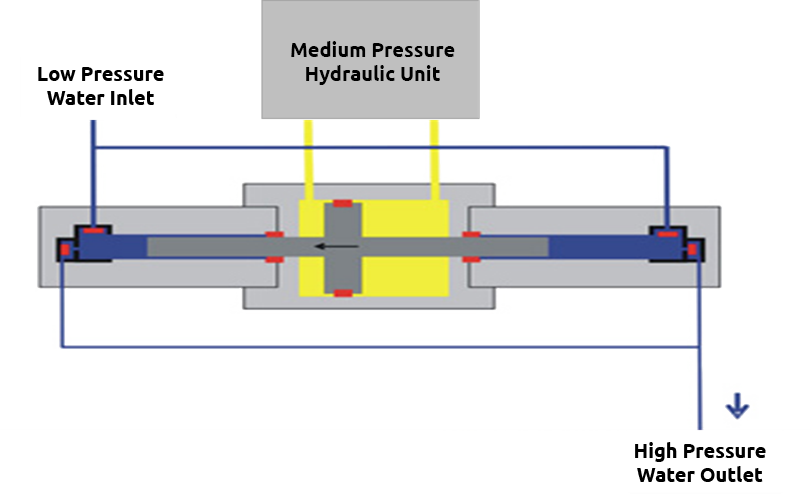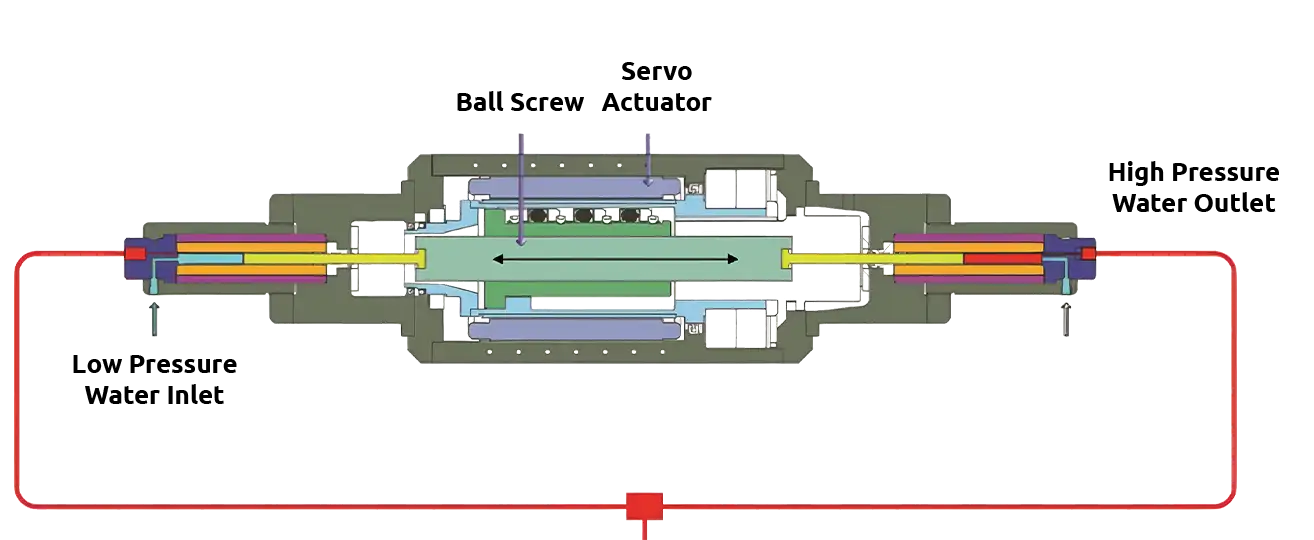The Principle of Pressure Amplification
HYDROPROCESS designs high-performance pressure amplifiers based on two technologies: hydraulic amplification and electromechanical amplification. These solutions can generate extremely high pressures — up to 7000 bar — while ensuring precision, reliability, and energy efficiency tailored to each application’s needs.
Hydraulic amplification
The fluid to be pressurized (P) is pushed by a small-diameter plunger (S2) actuated by a second, larger-diameter piston (S1), itself moved by a lower driving pressure (P1). In this case, the driving fluid used is generally oil pumped by a variable-flow hydraulic unit or compressed air. The pressure (P) generated is then equal to P = P1 x S1 / S2.
Electromechanical amplification
The fluid to be pressurized is also pushed by a small-section plunger, but this time actuated directly by an electromechanical system generally using a ball screw.
Thanks to the use of high-capacity ball screws and servomotors, this second principle makes it possible to achieve the same power outputs but with much higher energy efficiency compared to hydraulic systems in which the heating of the oil requires significant cooling capacities. This improvement is generally around 30%.
In both cases, thanks to the use of small-diameter plungers, the pressures generated can reach very high levels (up to 7000 bar) depending on the application.
Depending on the application, several amplifier configurations are available:
Double-acting configuration
Thanks to inlet and outlet valves, the fluid to be pumped enters at low pressure on one side while simultaneously exiting at high pressure on the other side, and vice versa. This configuration is used for high flow rates (filling large volumes, water jet cutting, …). It can also be combined with an aaccumulator (also called a pressure reservoir) in the case of water jet cutting to achieve more constant pressure.
Single-acting configuration
The amplifier delivers only during the piston forward stroke. This type of amplification, controlled with great precision thanks to the precise management of the plunger’s movement, is suitable for transient applications. Thanks to rigorous control of the volume of the injected fluid or the pressure as a function of time, this mode is particularly interesting for testing applications (Fatigue, Burst Test) or even Hydroforming of small parts, etc.
Our pressure amplifiers, whether single-acting or double-acting, are designed to meet the diverse needs of your industrial applications, offering precision, power, and reliability. Our solutions are the result of several decades of experience and expertise in the field of ultra-high pressure, ensuring high-performance, durable equipment tailored to the most demanding requirements of your industry.
HYDROPROCESS and its team are your partners for all of your projects involving high-pressure machines up to 7000 bar. Contact us for more information !


